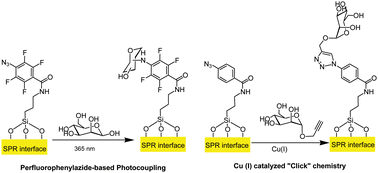With Analyst Issue 4, here is a list of our selected HOT articles free for you to read until February 8th.
Chemosensors for detection of CO2, microarray-based fluorescence assays, microRNA biosensors using Pb nanoparticles and forensic electrochemistry for atropine detection are among the topics highlighted in these articles. To know more about the latest studies published in Analyst, click on the links below:
Amidine-based fluorescent chemosensor with high applicability for detection of CO2: A facile way to “see” CO2
Tong Tian , Xi Chen , Hong Li , Yao Wang , Lin Guo and Lei Jiang
Analyst, 2013,138, 991-994
DOI: 10.1039/C2AN36401H
Suitability of GaP nanoparticles as a surface-assisted laser desorption/ionization mass spectroscopy inorganic matrix and their soft ionization ability
Tetsu Yonezawa , Hiroki Tsukamoto , Shinji Hayashi , Yuki Myojin , Hideya Kawasaki and Ryuichi Arakawa
Analyst, 2013,138, 995-999
DOI: 10.1039/C2AN36738F
Microarray-based fluorescence assay of endonuclease functionality and inhibition
Lan Ma , Min Su , Tao Li and Zhenxin Wang
Analyst, 2013,138, 1048-1052
DOI: 10.1039/C2AN36638J
Forensic electrochemistry: sensing the molecule of murder atropine
Ouissam Ramdani , Jonathan P. Metters , Luiz Carlos S. Figueiredo-Filho , Orlando Fatibello-Filho and Craig E. Banks
Analyst, 2013,138, 1053-1059
DOI: 10.1039/C2AN36450F
A novel label-free electrochemical microRNA biosensor using Pd nanoparticles as enhancer and linker
Xiaoyan Wu , Yaqin Chai , Ruo Yuan , Huilan Su and Jing Han
Analyst, 2013,138, 1060-1066
DOI: 10.1039/C2AN36506E
Conjugated self-doped polyaniline–DNA hybrid as trigger for highly sensitive reagentless and electrochemical self-signal amplifying DNA hybridization sensing
Yuwei Hu , Tao Yang , Qianhe Li , Qian Guan and Kui Jiao
Analyst, 2013,138, 1067-1074
DOI: 10.1039/C2AN36620G
Mesoporous phosphonate–TiO2 nanoparticles for simultaneous bioresponsive sensing and controlled drug release
Hui Li , Tian-Yi Ma , De-Ming Kong and Zhong-Yong Yuan
Analyst, 2013,138, 1084-1090
DOI: 10.1039/C2AN36631B
A functional graphene oxide-ionic liquid composites–gold nanoparticle sensing platform for ultrasensitive electrochemical detection of Hg2+
Na Zhou , Jinhua Li , Hao Chen , Chunyang Liao and Lingxin Chen
Analyst, 2013,138, 1091-1097
DOI: 10.1039/C2AN36405K























